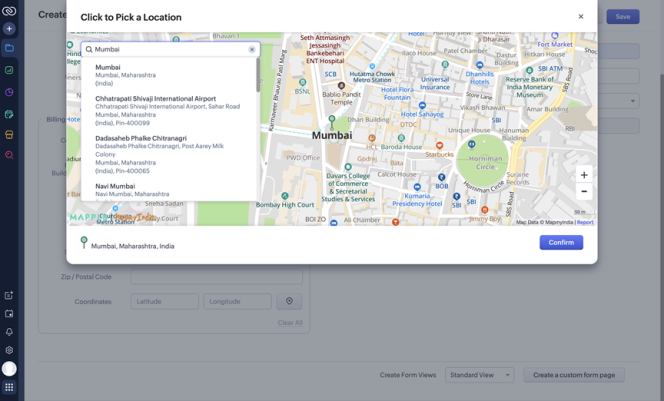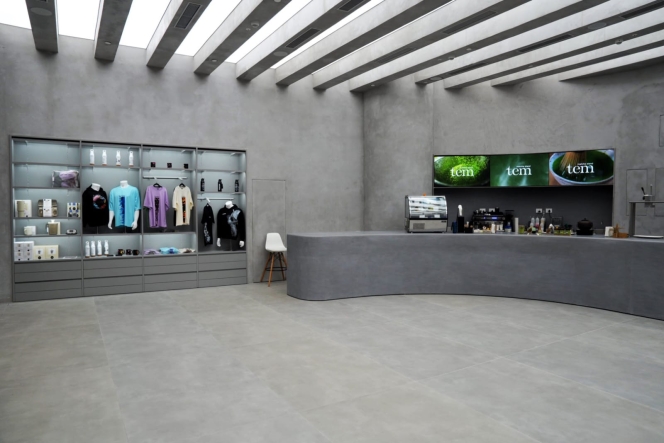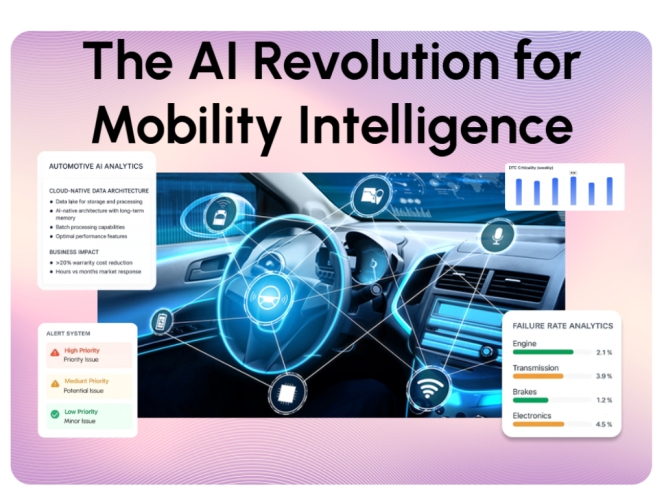
The reasons may be entirely political or geopolitical in nature, the road ahead for Chinese automakers in India looks difficult.
Chinese automaker BYD and its Indian partner Olectra Greentech (formerly known as Goldstone Infratech) is in news for its proposal to set up a manufacturing plant for electric cars in India. Certain ministry officials involved in vetting the proposal have raised security concerns, claimed an industry source.
The truth is hard to ascertain. It is also tough to ascertain the news in various media platforms regarding BYD conveying to Olectra that it would like to drop the proposal to invest in India. The proposal to invest is claimed to be worth USD 1 billion.
Since the clash between the Indian armed forces and Chinese armed forces at Galwan valley in 2020, the Indian Government has tightened scrutiny of Chinese investments in the country. The ones to get affected by this move have not just been the Chinese automakers but also producers of cell phones and other goods.
Key players in the Chinese EV market (also the world’s largest) such as BYD, SAIC and Geely have exerted their interest in exploring the Indian automobile market. While MG Motor India is a wholly-owned subsidiary of SAIC Motor, the Indian partners of BYD and Geely – Olectra Greentech and Adishwar Auto Ride respectively – are not legacy automotive players to be precise.
Against the emerging thought process that India produces among the world’s best automobiles, such joint ventures arrangements are likely to be met with greater scrutiny, the China sentiment included. With much work going on in India on the alternative fuel technologies front, including electric, it is clear that any foreign technology or effort will only be accepted after being truly ‘Indian-ised’ or localised.
The low entry barrier supporting the entry of start ups such as Ather Energy and Ola Electric in the EV space in India, legacy players such as Mahindra & Mahindra and Tata Motors have not stayed behind in their efforts to make exciting EVs that can address the real-time needs of Indian buyers as well as those in other markets.
What needs careful consideration is that they are competing with global players such as Honda and Toyota, which makes the Indian automotive market a tough place to be in.
While players like MG have an Indian management even though it is a wholly owned subsidiary of SAIC Motor (China), the fact is, the going has gotten tough for it too. The situation as a whole for Chinese companies or those that have Chinese partners seems to have turned difficult.
At one end there's rising competition coupled with China sentiment and at the other, there's the need to invest and grow.
With India said to be on the path to become the world’s biggest micro electromobility market, a significant shift at various levels is apparent.
As the biggest employer in the country and the biggest tax player too, the Indian auto sector, the government is keen, turns into a leading manufacturing hub of the world.
Courting EV players such as Tesla, the government seems clear about how it wants the foreign companies to behave when they come to do business in India. It has made itself clear that it is okay with Chinese players coming to India but they should conduct their operations lawfully and in compliance with laws of the country, mention sources. This points at the government being keen on Indian partners having a larger control of the joint venture, they add.
The answer to this thinking may be found in how China treats foreign players organisations wanting to do business there. It makes it necessary for the organisations to have a Chinese partner. Besides that, the foreign organisations are known to face face a number of regulatory and cultural challenges.
The authorities in China are said to favour its own over foreign players. This is despite the commitment by them to invest huge sums and ensure complete transparency in their dealings.
India as a democratic country has its own regulatory and cultural challenges. As the world’s largest two-wheeler market, fourth largest light vehicle market and fifth largest commercial vehicle market, India is likely to come across as a more balanced market with the participation of leading American, European and Japanese brands.
Some may have left because of reasons that are complex and also because of a marketplace that is tough to understand as well as crack. The homegrown automakers such as Mahindra & Mahindra, Ashok Leyland and Tata Motors have been giving tough condition to the foreign players in India by smartly moving up the ladder. They are also expanding their reach to some of the most competitive markets across the globe.
They have been acquiring companies but aren't exactly acquisition hungry. It is not by fluke that Tata Motors, which owns Jaguar Land Rover and the Korean Daewoo commercial vehicle business, has come to command 86 percent of the EV market in India. The automaker has been investing in technology and transparently engaging with its suppliers and other stakeholders to build a market reach.
Mahindra & Mahindra has been making big investments in setting up as well as upgrading its R&D facilities in India. It is making big investments in upgrading its design and development facilities in the country; in testing and validation facilities as well. A sneak peek in the MRV will reveal the extend of efforts being taken.
Underling the Indian Government’s seriousness to turn the Indian auto industry into a leading global manufacturing hub is the stress on local technology development, local content and local manufacture. The efforts to make chips is indicative of the same.
While the BYD, Olectra or BYD-Olectra badged electric buses operated by city and state transport undertakings (state government organisations largely) may be a common sight on Indian roads, it is also evident that the foot print of electric buses made by homegrown manufacturers such as Ashok Leyland and Tata Motors is also fast expanding.
It was roughly two years ago that BYD announced its plans to enter the Indian electric car market, albeit at the premium end with the e6 MPV and latter with the stylish Atto 3 SUV. The company, claim sources, has already invested over USD 200 million in India. Busy expanding its dealership network across the country, it has sold over 2,000 e-cars in India in the last one and a half years, they add.
But then, BYD is not the first Chinese auto maker whose proposal to invest in India seems to have run into rough weather. A few months back, MG Motor India was into news regarding it’s parent company wanting to dilute its stake in it. The reason being given for this, was the delay in the clearing the proposal to hike investment in Indian by its parent – SAIC Motor.
Even though it may appear as an iconic British brand or be projected as one, MG or Morris Garages is owned by a Chinese organisation. The products it offers in India are said to be of Chinese origin even though they are assembled at a factory in Halol, Gujarat.
With the proposal to invest by SAIC Motors being subjected to greater scrutiny, it is not surprising that MG Motor India is said to scout for a strategic investor to raise funds and fuel growth. Facing raid from the tax authority in November 2022, the company has been making efforts to cultivate a strong local supply chain for its products. It is also supporting the start up culture in India by showing interest for cooperation.
Despite the strong China sentiment, it cannot be refuted that businesses in India continue to source from there. A large amount of raw materials for the pharma industry are said to be sourced from there by the Indian pharma companies. Likewise, Indian auto companies are also known to source a good deal of parts – including batteries and electronic parts/modules – from China.
It is necessary that the government and people of India demand that whoever would like to business here should thoroughly engage with the local necessities, regulations and culture in spirit and on paper.
MapmyIndia And Zoho Announce Integration For CRM Users
- By MT Bureau
- November 26, 2025

MapmyIndia Mappls, a digital mapping and geospatial technology company, and Zoho, a technology company, have announced a collaboration to integrate two MapmyIndia features directly within Zoho CRM. The features being integrated are Address Capture and Nearby Lead Finder.
The integration allows Zoho CRM users to: capture verified addresses, visualise customer locations, discover potential leads in nearby areas and optimise sales routes. These functions are powered by MapmyIndia’s mapping platform.
Rakesh Verma, Co-Founder, Managing Director & Group Chairman, MapmyIndia Mappls, said, “This partnership between MapmyIndia and Zoho is a true blue Swadeshi celebration – two Indian innovators and leaders in their respective fields - coming together to deliver cutting-edge, homegrown technology that is world-class. MapmyIndia Mappls Address Capture and Nearby Lead Finder capabilities will help Zoho CRM users across India to work smarter and sell better, while keeping all data and innovation safe within India. I am confident that this partnership will boost collaborations amongst Indian tech companies creating a sympathetic ecosystem towards the realisation of an Atmanirbhar, Viksit Bharat.”
Mani Vembu, CEO, Zoho, said, "At Zoho, we believe that true technological progress begins with self-reliance. Building deep-tech R&D from India has always been one of our foundational pursuits, driven by the immense talent and creativity that thrive in the country. Our partnership with MapmyIndia embodies this vision, uniting homegrown expertise in business software and digital mapping to deliver solutions that are powerful, privacy-focused and proudly indigenous. This integration empowers Indian businesses by combining business intelligence with spatial intelligence, giving field teams the location-aware insights they need to better serve their customers."
Toyota Kirloskar Motor Opens Experiential Museum In Bengaluru
- By MT Bureau
- November 24, 2025

Toyota Kirloskar Motor (TKM) has unveiled the Toyota Experiential Museum (TEM) in Bengaluru, which it said is a new cultural and lifestyle hub for the company. The space combines Indian philosophy with Japanese culture and technology.
Located on the ground floor of the Phoenix Mall of Asia, TEM is spread across 8,200 sq ft and offers a five-senses experience, blending Japanese minimalism with Indian warmth through visuals, sounds, scents, textures and flavours.
Tadashi Asazuma, Deputy Managing Director, Toyota Kirloskar Motor, said, “At Toyota, our vision of creating ‘Happier Paths Together’ goes beyond mobility – it is about inspiring experiences that connect people, cultures, and emotions. With TEM, we hope to offer a truly unique experience that embodies this spirit.
In India, we found inspiration in the practice of Sadhana – the mindful pursuit of inner balance and fulfilment. TEM is where the Japanese culture and values of precision, serenity, and respect for nature beautifully align with the spirit of Sadhana, making TEM a meaningful blend of both. Designed to engage the senses and spark reflection, it brings together art, technology, and craftsmanship to inspire mindfulness, especially amongst the youth.”
The museum features minimalist interiors and distinct aesthetics designed to spark curiosity, inviting guests to explore at their own pace. The journey begins with a mirrored and rhythmic experience of the changing seasons common to Japan and India, unfolding through infinite projections of light, colour and motion. It then rises into a celebration of shared passion, featuring an audio-visual collaboration with DRUM TAO. A display includes a water curtain encircling a car draped in satin.
A design cafe offers a range of merchandise blending heritage with contemporary lifestyle, celebrating simplicity and craftsmanship.
The TEM cafe features a curated menu that blends the Japanese tradition of matcha with Indian flavours. Highlights include the India-inspired mango infusion.
- Maruti Suzuki India
- Maruti Suzuki Innovation Fund
- Ravity Software Solutions
- Sociograph Solutions
- Amlgo Labs
- Hisashi Takeuchi
- Vikas Rungta
Maruti Suzuki India Invests INR 20 Million In Ravity Software Solutions
- By MT Bureau
- November 21, 2025

Maruti Suzuki India (Maruti Suzuki) has announced an investment of nearly INR 20 million to pick up 7.84 percent stake in Bengaluru-based mobility insights start-up Ravity Software Solutions. The start-up claimed to be a global platform for AI-driven connected mobility intelligence, which transforms vehicle data into business value.
This marks the automaker’s third such move through ‘Maruti Suzuki Innovation Fund’, which makes strategic investments in innovative and high-potential start-ups that can support Maruti Suzuki India’s operations.
The company made its first investment of INR 20 million in Sociograph Solutions in June 2022, followed by the same amount in Amlgo Labs in March 2024.
Hisashi Takeuchi, Managing Director & CEO, Maruti Suzuki India, said, “Aligning to our core value of keeping customer at the core of our business, we are focused on enhancing vehicle ownership experience. In the age of open innovation, we strive to co-create business solutions with specialized entities operating in the particular field. Startups are ideal partners as they bring agility, fresh thinking, and cutting-edge solutions, to support our goal of ensuring customer delight. Our investment in Ravity Software Solutions will enable us to elevate customer experience through data-driven insights. We have been associating with startups since 2019 under our Maruti Suzuki Innovation programs. Through this initiative, we are investing in a culture of innovation, building strategic partnerships, and unlocking new opportunities, in line with Government’s ‘Startup India’ initiative to promote entrepreneurship in the country.”
Vikas Rungta, Founder, Ravity Software Solutions, said, “It is an honour to be associated with an industry leader like Maruti Suzuki, whose name is synonymous with bringing personal mobility to millions in India as well as across the globe. An automobile major like Maruti Suzuki partnering with a startup speaks volumes about its forward-thinking mindset, humility, and openness to learn and collaborate to explore new ideas. With our excellence and expertise in AI, analytics and mobility, we are committed to upholding the trust Maruti Suzuki has placed in us. We believe that the high complementarity of our strengths: Maruti Suzuki’s scale of business and our agility and entrepreneurship, will further enhance customer experience and delight.”
LG Display Wins Two CES 2026 Innovation Awards For Automotive Display Technology
- By MT Bureau
- November 21, 2025

LG Display has secured two CES 2026 Innovation Awards from the Consumer Technology Association (CTA) for two automotive display innovations: Dual View OLED and Under Display Camera-infrared (UDC-IR) OLED.
Both products were honoured in the In-Vehicle Entertainment category for delivering space efficiency, superior picture quality and high standards of safety.
The Dual View OLED solution allows a single automotive display to show different content based on the viewing position. For example, the driver can view navigation while the front passenger streams content. Optimised pixel structure ensures the driver’s touch operation does not interfere with the passenger’s entertainment. The product utilises a Tandem OLED device structure for picture quality and operates reliably in environments ranging from -40deg C to 85deg C.
The UDC-IR OLED jointly developed with LG Innotek, is claimed to world’s first full-screen automotive display to conceal an in-screen driver-monitoring camera. LG Display developed advanced algorithms that make the camera hole invisible from the driver’s viewpoint. The camera integrates LG Innotek’s high-resolution IR camera and image-enhancement software to ensure accurate driver monitoring, which is becoming mandatory due to global safety regulations.
LG Display will showcase these solutions at a dedicated booth at CES 2026. The company has consistently won CES Innovation Awards, previously honoured for its Thin Actuator Sound Solution (CES 2023) and its 57-inch Pillar-to-Pillar LCD (CES 2024).






Comments (0)
ADD COMMENT